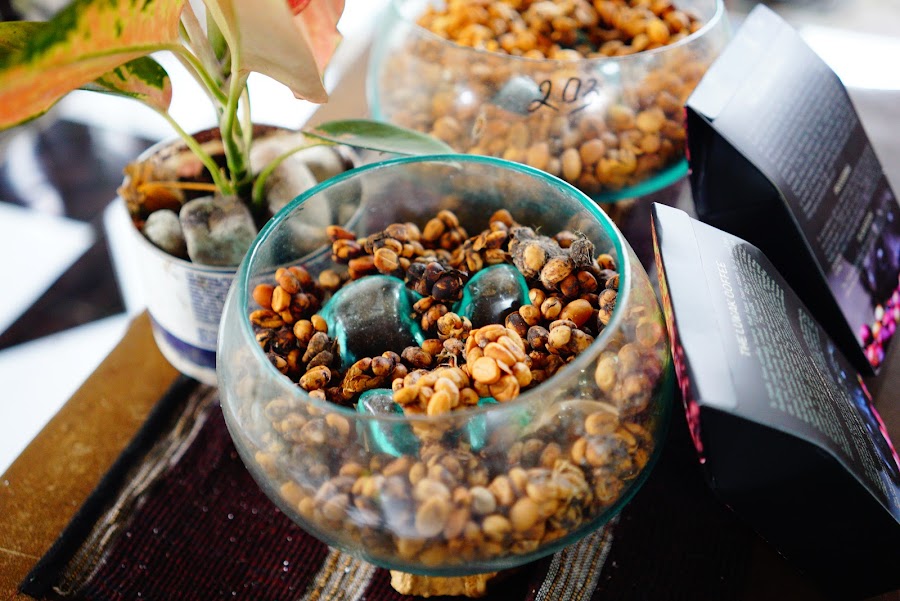
Kopi luwak refers to the coffee that includes part-digested coffee cherries eaten and defecated by the cute Asian palm civet (Paradoxurus hermaphroditus).
Producers of the coffee beans argue that the luwaks improve coffee through two mechanisms:
- Selection: If the civet chooses to eat the cherries, it's because they are excellent.
- Digestion: Fermentation occurs in the digestive tract of the luwak where his protease enzymes seep into the beans making shorter peptides and more free amino acids. Beans are collected from there fecal matter.
The origin of kopi luwak is closely connected with the history of coffee production in Indonesia. In the early 18th century the Dutch established the cash-crop coffee plantations in their colony in the Dutch East Indies islands of Java and Sumatra, including Arabica coffee introduced from Yemen. During the era of Cultuurstelsel (1830–70), the Dutch prohibited the native farmers and plantation workers from picking coffee fruits for their own use. But still, the native farmers wanted to have a taste of the famed coffee beverage. They observed that certain species of luwak (Asian palm civet) consumed the coffee fruits, but left the coffee seeds undigested in their poo. So the natives collected these luwaks' coffee seed droppings, cleaned, roasted and ground them, to make their own coffee!!
The fame of aromatic civet coffee spread from locals to Dutch plantation owners, becoming their favourite. Because of its rarity and unusual process, civet coffee was expensive even during the colonial era.
While the coffee industry regards this as a gimmick, it is quite a cool thing to give a shot while visiting Tanah Lot. Experts may say the aroma and body is diminshed by the luwak effect but as a nescafé drinker, I couldn't really tell any difference, maybe a bit lighter than the powder...

Eating, sleeping, pooing all day...

...the life of the Luwak.

Their poo displayed as trophy.

And sold as souvenir :)






















No comments
Post a Comment